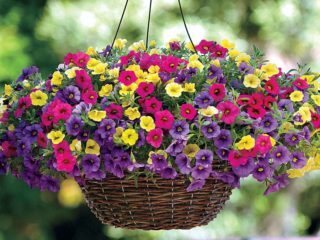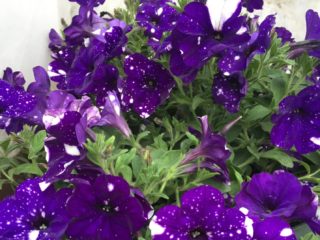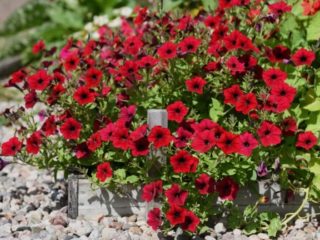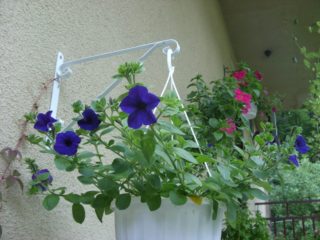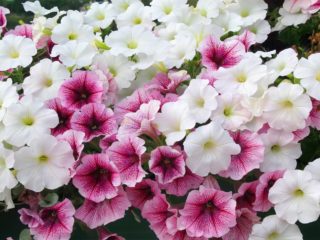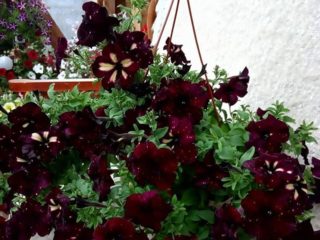Content
Cascading ampelous petunias stand out for their decorativeness and abundance of flowering. Caring for plants is easy, even a novice gardener can grow them from seeds. An excellent example is the petunia Opera Supreme. This is a whole series of varieties. Thanks to the variety of colors, they can be incorporated into any landscape design concept.
Description and characteristics of the variety
Petunia Opera Supreme F1 is classified as ampelous cascading. This means that the plant is more often planted not in a flower bed, but in a flower pot, suspended from the ceiling or attached to walls, fences, trellises. But even on the ground, the bush will not get lost, turning into a bright, dense "carpet" with an area of about 1.2 m². You can even create complex patterns on the flower bed by combining varieties. When planted in a flowerpot on a stand, the stems are quickly outweighed over its edges, the flower, together with the container, becomes like a ball or a waterfall.
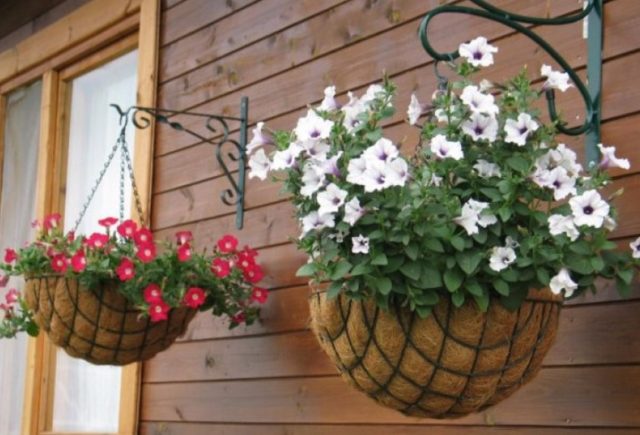
Such "balls" from pots with petunias are a very effective decoration of the garden.
Opera Supreme compares favorably with other varieties of ampel petunias by its undemandingness in terms of the quality of the soil and illumination. She "forgives" the gardener for certain flaws in agricultural technology, successfully adapts to the peculiarities of the local climate, different whims of the weather.
The height of the bush reaches 20 cm. The length of thin, flexible stems varies within 1-1.3 m. The diameter of a fully opened simple (non-double flower - up to 6 cm). Flowering is very abundant, leaves and shoots are practically invisible. Its duration depends on the region of cultivation. In a warm subtropical climate, Opera Supreme blooms from late spring to late autumn. The buds stop opening only after the first frost.
Most of the petunias in the Opera Supreme series are hybrids. Their name necessarily contains the designation "F1". There is no point in collecting seeds for planting next year - varietal characteristics are not preserved.
Opera Supreme petunias series
The Opera Supreme series of petunias includes more than a dozen of its varieties. The main difference is the color of the flowers. Based on it, they give names.
Petunia Cascade Opera Supreme Lilac Ice F1
Ampel petunia Opera Supreme Lilac Ice ("purple ice"), compared to its "relatives", stands out for its insensitivity to how much light it receives daily. The hybrid is suitable for landing throughout Russia, including the northern regions. Flowers of a very delicate lilac shade with a brighter ink-violet "mesh". In the photo, Petunia Opera Supreme Lilac Ice may look a little darker.
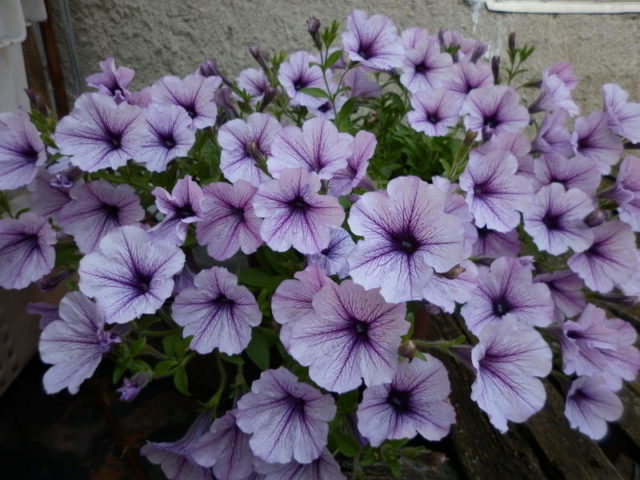
Flower shoots stretch 1.1-1.2 m
Petunia Cascade Opera Supreme F1 Raspberry Ice
Ampel petunia Opera Supreme Raspberry Ice ("crimson ice"), hanging from the edges of the hanging pots, forms an almost regular "dome". But at the same time, the bush turns out to be quite compact. The stems are elongated by about 1 m.
The quality of the substrate does not affect the abundance of flowering, but the necessary conditions for this are regular fertilization and the removal of dried flowers. The main tone of the petals is from light crimson to pastel pink.Additional "decor" of ampelous petunia Opera Supreme Raspberry Ice - bright crimson veins.
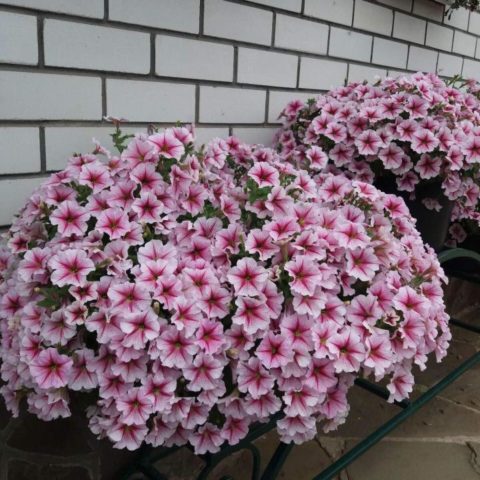
For abundant flowering of this variety, regular fertilization and removal of dried flowers are required.
Petunia Cascade Opera Supreme F1 White
Opera Supreme White ampelous petunia does not stand out in anything special in comparison with other varieties. The flowers are snow-white with a pale yellow base.

From a distance, the bush resembles a large white cloud
Petunia Opera Supreme Pink Morne
The bush of the ampelous petunia Opera Supreme Pink Mourn turns out to be neat and compact. The length of the shoots does not exceed 1 m. The flowers are large, from 6 cm, in optimal conditions - up to 8-10 cm. The color is very interesting - gradient. A wide pastel pink border around the edges of the petals gradually changes color to snow-white. At the very base there is a bright yellow spot. The pink shade, judging by the photo, resembles the petunia of the Opera Supreme Rusbery Ice.
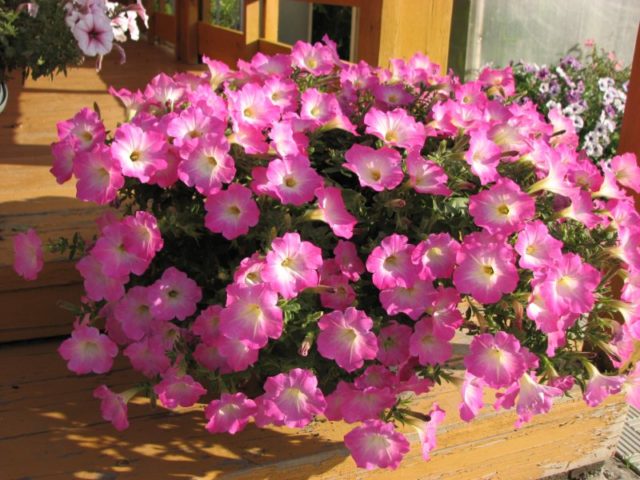
The flowers are large - from 6 cm, in optimal conditions - up to 8-10 cm
Petunia Opera Supreme Coral
Of all the described varieties of petunia, Opera Supreme Coral least of all resembles the classic ampelous one. Its stalks are quite strong, they nod reluctantly. The flowers are bright, coral, with tints of peach and salmon. This shade does not fade in the sun.

The brightness of the shade of the petals is maintained even if direct sunlight falls on the petunia
Petunia Opera Supreme Purple
Ampel petunia Opera Supreme Purple is distinguished by the fact that the buds dot the stems, which grow to 0.9-1.2 m, almost along the entire length. Therefore, the flowering bush resembles an inky purple dome. Because of this, the plant needs increased doses of fertilizers and a sufficient amount of soil for the development of the root system.
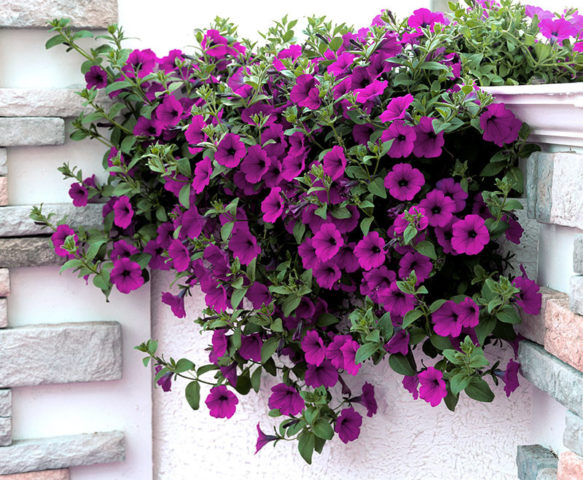
The leaves on the bush are practically invisible - it is literally strewn with flowers
Petunia Cascade Opera Supreme F1 Red
Petunia ampelous Opera Supreme Red works best when planted in hanging pots or baskets. An intensely branching plant turns into a ball or drop, not a "beard" or cascade. This garden decoration looks very delicate and elegant. The flowers are large, bright scarlet.
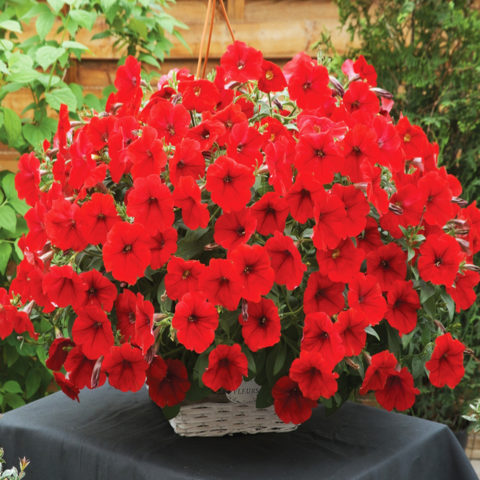
This variety is ideal for vertical garden decor.
Features of growing and care
Opera Supreme seeds are planted early, in late February or early March. They are already fully prepared for landing. Germination or disinfection is not required. They are not buried in the soil, leaving them on the surface.
Seedlings appear relatively quickly, after 12-14 days. It is very important to constantly monitor the moisture content of the substrate, not allowing it to dry out. At the time of planting, the seedlings should be about 3 months old.

Petunia seedlings with a moisture deficit dry out in just a few hours
Ampelous petunias from the Opera Supreme series are undemanding to the quality of the substrate. However, light, but nutritious soil that allows air and water to pass through is best suited for them. For normal development, one plant needs at least 6 liters of soil (preferably 8-10 liters). Use, for example, a mixture of leaf soil, humus, peat and sand (2: 2: 1: 1).
The optimal location for Opera Supreme is light partial shade.
The agricultural technology required for this series of petunias can even be called primitive. They do not need pruning and pinching of shoots for greater "bushiness". It is only necessary to remove dried flowers in a timely manner, this stimulates the formation of new buds.
Opera Supreme varieties are watered sparingly, allowing the substrate to dry 4-5 cm deep. They tolerate moisture deficiency much better than excess moisture. In addition, abundant watering provokes the development of fungal diseases. The rate for one plant is about 3 liters of water twice a week. It is desirable to pour it at the root.
After each watering, it is recommended to move the shoots as far as possible and gently fluff the soil in the pot.It is quite possible to do without loosening and mulching the soil in the flower bed. Shoots that cover the soil with a continuous carpet prevent it from “caking” into a hard crust on the surface and inhibit the growth of weeds.
The abundance of flowering of ampelous petunias Opera Supreme determines their increased need for nutrients. Starting from the moment the buds appear, the plants are fed once a week and a half, 2-3 hours after watering.
Petunia is not picky about the fertilizers themselves, it responds positively to natural organic matter, and to special store products for decorative flowering annuals. It is recommended to alternate organic feeding (infusion of fresh manure, poultry droppings, "green tea" from weeds, potassium and sodium humates) with mineral fertilizers.
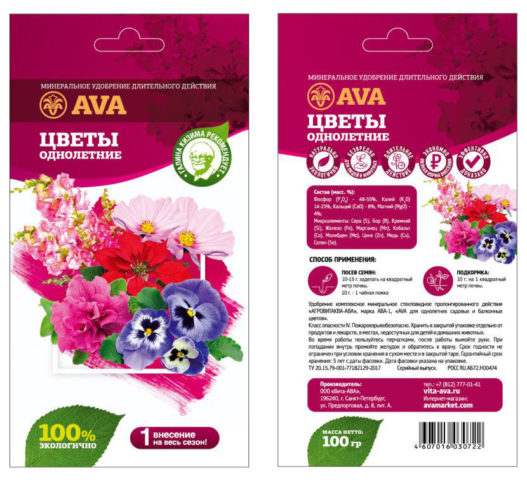
Mineral fertilizers provide blooming petunias with complex nutrition, including all the necessary macro- and microelements
Diseases and pests
Immunity in all varieties from the Opera Supreme series is very good. As a rule, a minimum of maintenance is required to avoid the development of fungi and pest attacks.
This petunia has no exotic diseases. Typical for most horticultural crops can develop on it:
- powdery mildew (a grayish-white coating in the form of a powder, gradually darkening, thickening and turning into black-brown mucus);
- gray rot ("weeping" spots on the plant, dragging on with a "fluffy" light gray bloom with black blotches).

Powdery mildew on petunia leaves seems to be a harmless bloom that can be easily erased, but in fact it is a dangerous disease.
It is easier to cope with the disease if you notice it at an early stage. Therefore, experienced flower growers are advised to inspect the flower beds and pots at least once a week. Having found suspicious symptoms, all affected (even slightly) parts of the plant are removed. Petunia and soil in pots, on a flower bed are sprayed with a solution of any fungicide. Its concentration and frequency of treatments are determined by the instruction. Usually 3-4 procedures are enough.
Pests on the Opera Supreme petunia attack the most "omnivorous" sap-eating plants:
- aphid (small yellow, green, brown, black insects, densely clinging to buds, tops of shoots, young leaves);
- thrips (similar to black "dashes", settle mainly on the seamy side of the leaves);
- spider mite (the pests themselves are almost invisible, they can be detected by thin translucent "threads" that braid the plant).
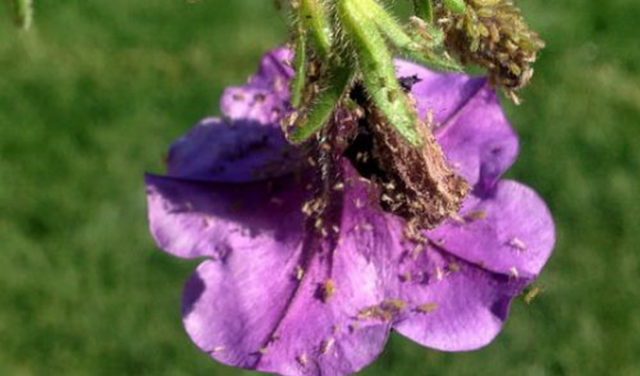
Aphids live in a stable symbiosis with ants, so they also need to be dealt with.
Any broad-spectrum insecticide is effective against insects. For the prevention of their attacks, folk remedies are quite suitable. Spider mites are destroyed with special chemicals - acaricides.
Conclusion
Petunia Opera Supreme, even against the background of other ampelous and cascading varieties, stands out for its abundance of flowering. The bush grows quickly, recovers if you break several shoots, does not require pinching to form. Relative disadvantages (large volume of substrate, impossibility of independent propagation by seeds) does not detract from the advantages of the variety in the eyes of gardeners, therefore it enjoys steady popularity.
Reviews about ampelous petunia Opera Supreme Pink Morn, Parple, White
